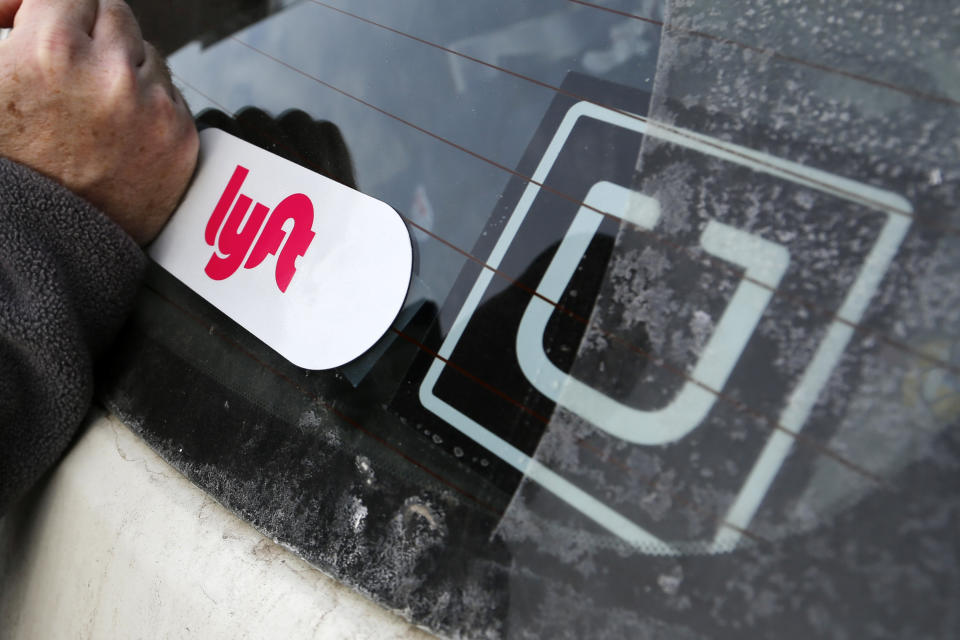Transportation’s ‘pink tax’: Women spend more than men to get around

You’ve probably heard of the ‘pink tax’: it’s the extra 7% women pay for products and services, like razors and haircuts, geared towards them. According to a new survey by NYU’s Rudin Center for Transportation, women also routinely pay more to get around New York City.
According to the American Public Transportation Association (APTA), 55% of public transportation users are women. Their study found that 87% of all public transport trips directly affected the economy through work commutes or consumer spending trips. But as the NYU study found, women sometimes skip public transport for safety reasons.
Three-quarters of the survey’s 547 respondents reported that they had experienced harassment or theft while using public transport. Those real and perceived threats to their safety caused women to use services like Uber or Lyft, or take taxis. As a result, women pay roughly $26 to $50 more each month to take a car to their destination — all in the name of safety.
And men? Their extra costs each month amount to $0.
Sarah Kaufman, associate director for NYU’s Rudin Center for Transportation, and one of the study’s authors, points out that men will take cabs, or use ride sharing services like Uber and Lyft. But their primary reason for doing so isn’t safety.
“If they are taking a taxi, it’s about convenience and speed,” she said.
An old system
Caretakers suffered even more. Nationally, women make up 75% of caretakers of children and the elderly. The survey found that people who took frequent trips with their small children or elderly relatives tacked on more than $75 a month to skip public transport.
That’s not surprising to Mantill Williams, an APTA spokesman.
“When you compare us to other countries and nations, we are woefully behind modernizing,” he said. “We have a $90 billion backlog to bring them [transportation systems] up to be modernized for people today.”
In New York City alone, only a quarter of the stations have an elevator, which makes lugging a stroller or using a wheelchair that much more difficult.

“As a nation we haven’t made that a priority,” he explained. “If you have a stroller, you’re dealing with infrastructure that was built a 100 years ago and hasn’t been modernized.”
It’s worth noting, however, that many of the survey’s respondents are well educated (more than 50% had a master’s degree) and lived in the Upper West Side – and thus probably more affluent. Kaufman says this likely skewed data. As many New York commuters will know, just one trip from Manhattan to another borough can cost more than $26.
A widespread problem
More than three-quarters of respondents also identified as white. It’s unclear how women of color and/or lower-income tackle these issues.
“It’s incredibly difficult on lower-income women who have to take public transport regardless of what they’re putting up with,” Kaufman said. And, Kaufman points out, safety issues might limit women’s options when it comes to work.
“It’s a question of how they’re participating in the economy,” Kaufman said. “Overnight shift worker women, for example, are at a loss” – they just may choose not to take those jobs because of safety concerns.
It’s a sentiment echoed by the World Bank. Though the NYU study focuses on New York commuters, research shows that these concerns are widespread.
According to the World Bank, in developing countries, issues with safety and limited transport options will reduce a woman’s participation in the labor economy by 16.5%. And that has huge consequences on the economy. Global GDP could grow by an additional $5.8 trillion if the gender gap in labor force participation decreased by 25% by 2025, according to the International Labour Organization.
But many say that transportation policy remains gender-blind, despite clear differences in needs.
“Historically, until very recently transportation was an entirely male-dominated field,” Kaufman explained. “If there is no diversity, then not all needs will be met.”
Minding the gap
So how to close the gap?
Kaufman points to public-private partnerships developing between many cities and companies like Uber and Lyft that subsidize trips for commuters late at night.
“I don’t know if subsidized Lyft trips is the answer here,” Kaufman said. “But I do think a private-public partnership can be one answer.”

That is also echoed by Williams.
“Not only do we advocate that as a good idea, we’ve put that in place in some of our systems,” said Williams. “It can solve that first mile, last mile problem.”
Williams noted that peak demand times for private car use occurs between the hours of 10 p.m. and 4 a.m.
“It’s just a good complement to have, when it’s late at night,” he said, referring to the ride-sharing services. “A better, safer, more convenient alternative, particularly when the system isn’t running frequent service.”
Meeting demand
Uber hopes to capitalize on this demand.
“Uber is one piece of the transportation pie and is a complement to public transit,” said Uber in a statement.
In 2016, Summit, N.J., started a pilot program to subsidize Uber rides for commuters. Last year, they voted to extend that program. In Florida, several cities partnered with the company to offer rides.
Uber says that working with cities and public transit is an “important” part of their business vision, and one of their goals. They cited Boston and New York as two cities where they hope to complement public transport during late night hours and in areas where public transport isn’t easily accessible.
Kristin Myers is a reporter at Yahoo Finance. Follow her on Twitter.
Read more:
Cannabis investor: ‘It’s not just about Canada. It’s not just about the US’
‘Trumponomics’ author: ‘Trump sure looks like a genius right now’ on the Fed
Follow Yahoo Finance on Twitter, Facebook, Instagram, Flipboard, LinkedIn, and reddit.
